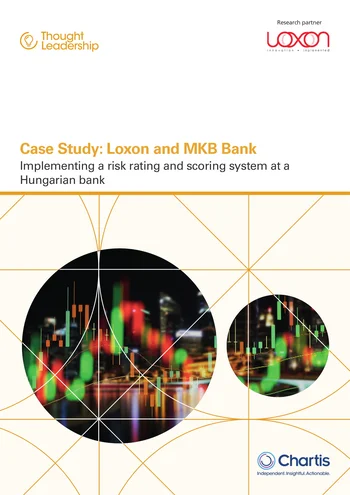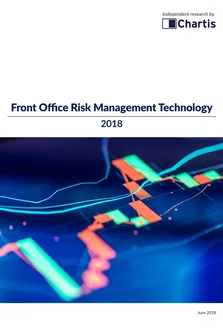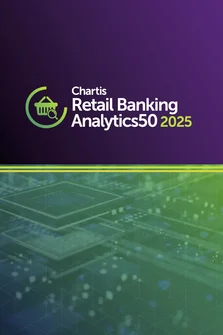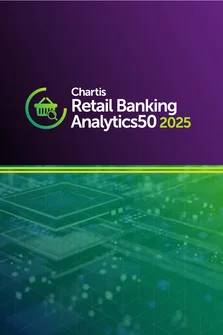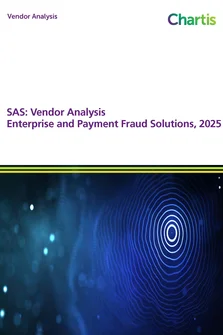<div class="WordSection1">
<h3>Background: the growing importance of credit risk ratings</h3>
<p>Credit risk management is becoming an increasingly important element of how financial institutions (FIs) operate, in part because of the increasing connection between the risk and finance departments. As a result of recent global accounting standards, such as International Financial Reporting Standard (IFRS) 9, FIs are now adopting a more ‘risk-aware’ view, in which risk management plays a key part in the construction of their balance sheets. Credit risk is becoming a key factor in forecasting default events, a development that has manifested itself in functions such as expected credit loss (ECL) calculations. Consequently, the risk and finance functions are continuing to merge, creating a need for more diversified skill-sets and increased collaboration on technology systems and the reporting and analysis of credit risk.</p>
<p>Credit risk ratings and evaluation tools are now critical to the technology infrastructure in retail and commercial banks. What’s more, the implementation and integration of a new system into an existing architecture is a multi- faceted project which does not end when the implementation project finishes – full integration can take a long time.</p>
<p>For the system implementation explored here, MKB Bank – following a change of ownership and direction – replaced its legacy risk rating and risk management systems (which consisted of three separate modules) with a solution from Loxon that included a risk ratings engine, a financial data analysis module and a risk data mart.</p>
<h3>The case study: research process and findings</h3>
<p>In developing this report, Chartis conducted interviews with representatives from both Loxon and MKB Bank to understand:</p>
<ul>
<li>Their perspectives of the problem that needed to be solved.</li>
<li>The parameters of the implementation project.</li>
<li>How the requirements were fulfilled.</li>
</ul>
<p>As part of our research we also assessed the vendor landscape, to provide context around the suitability of Loxon’s capabilities for the bank’s needs.</p>
<h3>Results</h3>
<p>Ultimately, the implementation supplied:</p>
<ul>
<li>A single integrated platform supporting MKB Bank and its subsidiaries (such as leasing companies). The platform combined a risk ratings engine, a financial data analysis module and a data mart for risk.</li>
<li>Tools and interfaces that can be tailored to the specific needs of the bank’s staff and users (with test models delivered throughout the process).</li>
<li>A rapid implementation – the project was completed within 12 months. Given its scope and scale, this was a significant result.</li>
<li>Considerable cost savings: according to MKB, the consolidated Loxon system is five to 10 times cheaper to run than the systems it displaced.</li>
</ul>
<p>Integrating a system of such wide scope with a bank’s technology architecture is a lengthy process, and in our experience it is rare for a non- incumbent vendor to meet its client’s expectations within a relatively short timeframe. According to the bank, however, the project was a resounding success – benefits included significant savings in both time and cost, while negative impacts were relatively slight: mostly delays in forecasting and integrating with pre-existing IT systems.</p>
</div>
Only users who have a paid subscription or are part of a corporate subscription are able to print or copy content.
To access these options, along with all other subscription benefits, please contact info@chartis-research.com or view our subscription options here: https://www.chartis-research.com/static/become-a-member
You are currently unable to print this content. Please contact info@chartis-research.com to find out more.
You are currently unable to copy this content. Please contact info@chartis-research.com to find out more.
Copyright Infopro Digital Limited. All rights reserved.
As outlined in our terms and conditions, https://www.infopro-digital.com/terms-and-conditions/subscriptions/ (point 2.4), printing is limited to a single copy.
If you would like to purchase additional rights please email info@chartis-research.com
Copyright Infopro Digital Limited. All rights reserved.
You may share this content using our article tools. As outlined in our terms and conditions, https://www.infopro-digital.com/terms-and-conditions/subscriptions/ (clause 2.4), an Authorised User may only make one copy of the materials for their own personal use. You must also comply with the restrictions in clause 2.5.
If you would like to purchase additional rights please email info@chartis-research.com
